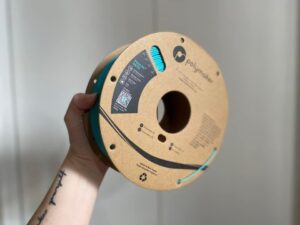3D printing is a great technology with so many uses and advantages for countless industries. One of the most wide-spread uses for it is what’s referred to as “rapid prototyping”. This is an industry term for using fabrication techniques that quickly bring an idea from digital file to physical model. 3D printing has given engineers and designers the ability to create working prototypes within hours from CAD files, that can be physically tested and assessed for upgrades and alterations.
What Makes it so Fast?
3D printing can be done in a variety of ways, but FDM printing is one of the less complex methods for prototyping. With FDM 3D printing, materials are heated and extruded onto a print surface, layer by layer. This technique allows for a lot of variation in print “quality” or detail. Being able to work with various settings means you can get your prototype as close to the real thing as you need while managing print time and amount of materials used.
For example, you can have your prototype printed with a large nozzle that makes the layers taller, meaning your print will require less layers and less time to complete. This technique lowers the overall detail your print can have, but the time saved lets you see the finished product sooner. If your goal is just to check dimensions or fit the part with another, this is a great way to rule out design iterations quickly.
FDM also gives you control over the infill (density) of a part, which can play a large role in print speed and durability. Infill can be changed by percent of density, so 0% would be hollow and 100% would be solid. By choosing to print with less infill (say, around 20%), you can print large models faster, although they won’t have the structural integrity of a solid part. This is useful for saving material when you just need to see and fit a physical part without committing to final materials like metal or wood.
A Range of Materials
Another big advantage of 3D printing for prototyping is the wide range of materials available to create your sample parts in. FDM printers are capable of extruding many plastic based filaments with additives that change the properties of the final printed part.
One of the most versatile of these filaments is PLA (Polylactic Acid), which is made from renewable resources like sugar cane or corn starch. While this filament is still a plastic, it has the advantage of plant based ingredients that help it to biodegrade much faster than oil based plastics. Under the right conditions, it can even be composted!
PLA is a fairly easy filament to work with. It doesn’t require any crazy high temperatures, it adheres to itself and build surfaces well, and it does well under a variety of print settings. Printing in PLA means you can spend less time fussing with settings and more time focusing on refining your part design.
If you need to prototype a part in a material that is more industrial, nylon infused filaments are perfect for the job. Carbon fiber and glass fiber filaments provide added benefits over standard plastics and can let you test more heavy wear and tear parts without investing in more expensive manufacturing processes to get a working sample.
Overall, 3D printing is a great technology with a lot of potential in the manufacturing industry. Whether you just need a quick prototype or a ready-to-use part in less time, this method is a great option for engineers and product designers.
Need your own rapid prototype but don’t have a 3D printer? We’re here to help!
Upload your CAD file to our 3D print request tool, or feel free to get in touch to discuss a more in-depth print project.



